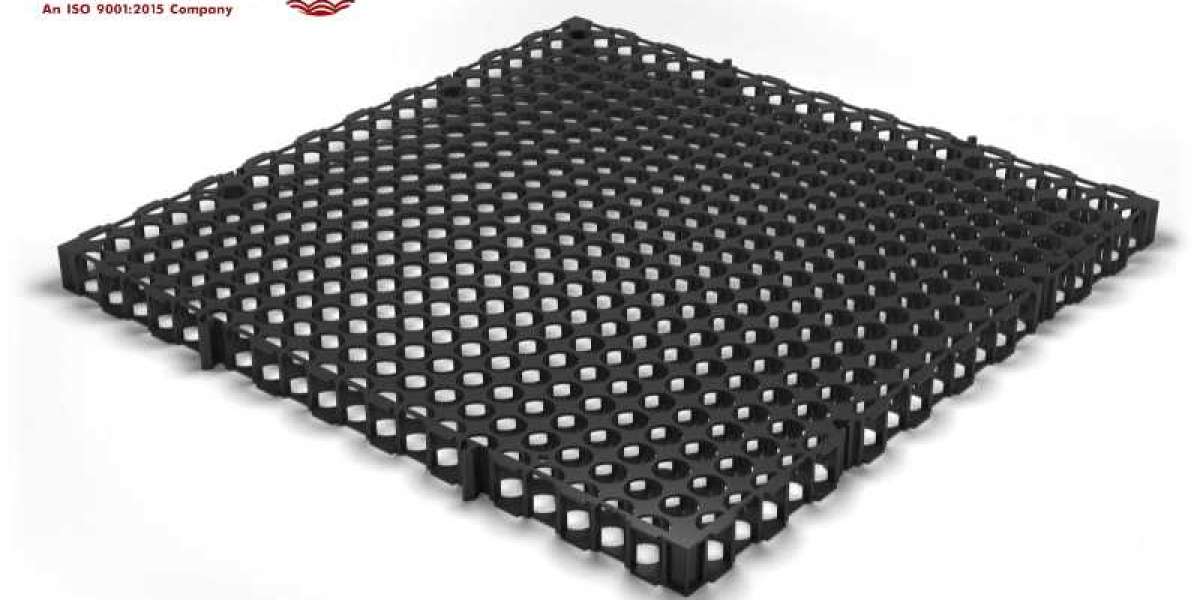Stormwater management has become a critical concern for urban planners and civil engineers worldwide, especially in densely populated areas. The increasing frequency of intense rainfall, coupled with urbanization, has led to severe issues like waterlogging, flooding, and degradation of natural ecosystems. Traditional drainage systems often succumb to such pressures, necessitating the adoption of innovative solutions. One such effective solution is the Drainage cell installation, which provide a sustainable and efficient means of managing stormwater.
Understanding Drain Cells
Drain cells are modular, lightweight cellular structures typically constructed from high-density polyethylene (HDPE) or similar materials. These cells are designed to create a void space in soil or other substrates, allowing for efficient water management and infiltration. The primary function of a drainage cell is to facilitate the collection, temporary storage, and controlled release of stormwater, thereby reducing surface runoff and minimizing the risk of flooding.
In urban areas, where traditional drain systems may be overwhelmed, the use of these innovative structures offers a revolutionary approach to stormwater management. The versatility of drain cells allows for a wide range of applications, including beneath permeable pavement, green roofs, and landscaped areas.
Advantages of Drain Cells
1. Enhanced Water Management
One of the primary benefits of using drainage cells is their ability to enhance water management. By creating temporary storage for stormwater, these cells help mitigate peak flow into conventional drainage systems. This is particularly important in cities like Mumbai and Delhi, which experience heavy monsoons, leading to flooding and waterlogging. Drain cells can absorb and slowly release water, reducing the burden on existing drainage infrastructure.
2. Space Efficiency
Urban areas often face space constraints, making it difficult to implement traditional stormwater management systems. The compact nature of drain cells allows them to be installed in a variety of locations, including small residential spaces, parking lots, and under pavements. This space efficiency is vital in cities where land is at a premium.
3. Environmentally Friendly
Drain cells contribute to environmentally sustainable practices. By promoting groundwater recharge, they help maintain the natural hydrology of an area. Furthermore, they can be integrated into green infrastructure projects, such as bioswales and rain gardens, promoting biodiversity and improving urban aesthetics.
4. Cost-Effective Solution
While the initial cost of installing a drainage cell mat may be a consideration, the long-term benefits often outweigh the expenditure. By reducing the risk of flooding and water-related damage, drainage cells can lead to significant savings in maintenance and repair costs for municipal systems.
The Role of Drain Cell Mat
A drain cell mat is an assembly of interconnected drain cells that create a single, continuous drainage layer. This configuration enhances water flow and allows for even distribution of stormwater across a larger area. These mats can be customized to suit specific site conditions, making them an adaptable solution for various stormwater management challenges.
In India, the use of drain cell mats is gaining traction due to their efficiency and adaptability in urban environments. Drain cell in India can be installed beneath parking lots, playgrounds, and roadways, effectively managing stormwater runoff while maintaining surface usability.
Benefits of Utilizing a Drain Cell
Improved Performance: The interconnected design of drain cell mats enhances the overall performance of the drainage system, promoting better infiltration rates.
Ease of Installation: The pre-assembled nature of these mats allows for rapid installation, minimizing disruption to the surrounding environment.
Long-Term Durability: Constructed from high-quality materials, drain cell mats possess high longevity, which reduces the need for frequent replacement or repair.
Installation of Drainage Cell: Best Practices
While the benefits of drainage cells are clear, proper installation is crucial for maximizing their effectiveness. Here are some best practices to follow during drain cell installation:
1. Site Assessment
Before installation, a thorough assessment of the site is essential to understand the soil conditions, existing drainage patterns, and the expected volume of stormwater. This information will inform the sizing and placement of the drainage cells.
2. Design Considerations
Tailor the drainage cell system design to the specific needs of the site. Consider factors such as depth, area, and the configuration of the cell mat. Engaging with a professional experienced in stormwater management can ensure an effective design.
3. Proper Excavation
Prepare the installation site by excavating to the appropriate depth and ensuring a level base. Remove any debris, organic material, or sharp objects that may damage the drain cells.
4. Installation Technique
When laying down the drain cell mat, follow manufacturer guidelines to ensure proper orientation and connection of cells. Ensure that the layer of geotextile fabric (if used) is installed properly to prevent soil infiltration into the cells.
5. Backfilling and Compaction
Carefully backfill the area following installation, ensuring that the soil is compacted evenly to avoid future settling, which can lead to drainage issues.
6. Ongoing Maintenance
Once installed, regular maintenance is necessary to ensure optimal performance. This includes inspecting the drainage cells for blockages or damage and cleaning the surface to prevent debris accumulation.
Conclusion
The challenges posed by stormwater management are becoming increasingly significant in urban areas across India and globally. The adoption of innovative solutions, such as drainage cells, is essential for creating resilient infrastructure capable of handling excessive rainwater. By installing efficient drain cells and utilizing Drain cell mat, urban planners and builders can address stormwater drainage problems effectively while promoting sustainability and resilience in built environments. As awareness of these technologies grows, we can look forward to smarter cities that prioritize both their residents’ well-being and ecological health.
Frequently Asked Questions (FAQs)
Are drainage cells environmentally friendly?
Yes, drainage cells promote groundwater recharge and help minimize surface runoff, thus reducing soil erosion and protecting water quality. They are also designed to last for many years without introducing harmful materials into the environment.
Can drainage cells be used in residential settings?
Absolutely. Drainage cells can be effectively used in both residential and commercial applications. They work well in gardens, driveways, and under green roofs.
What is the expected lifespan of drainage cells?
When properly installed and maintained, drainage cells can last for decades. Their durability and resistance to decay make them an ideal choice for long-term stormwater management solutions.


